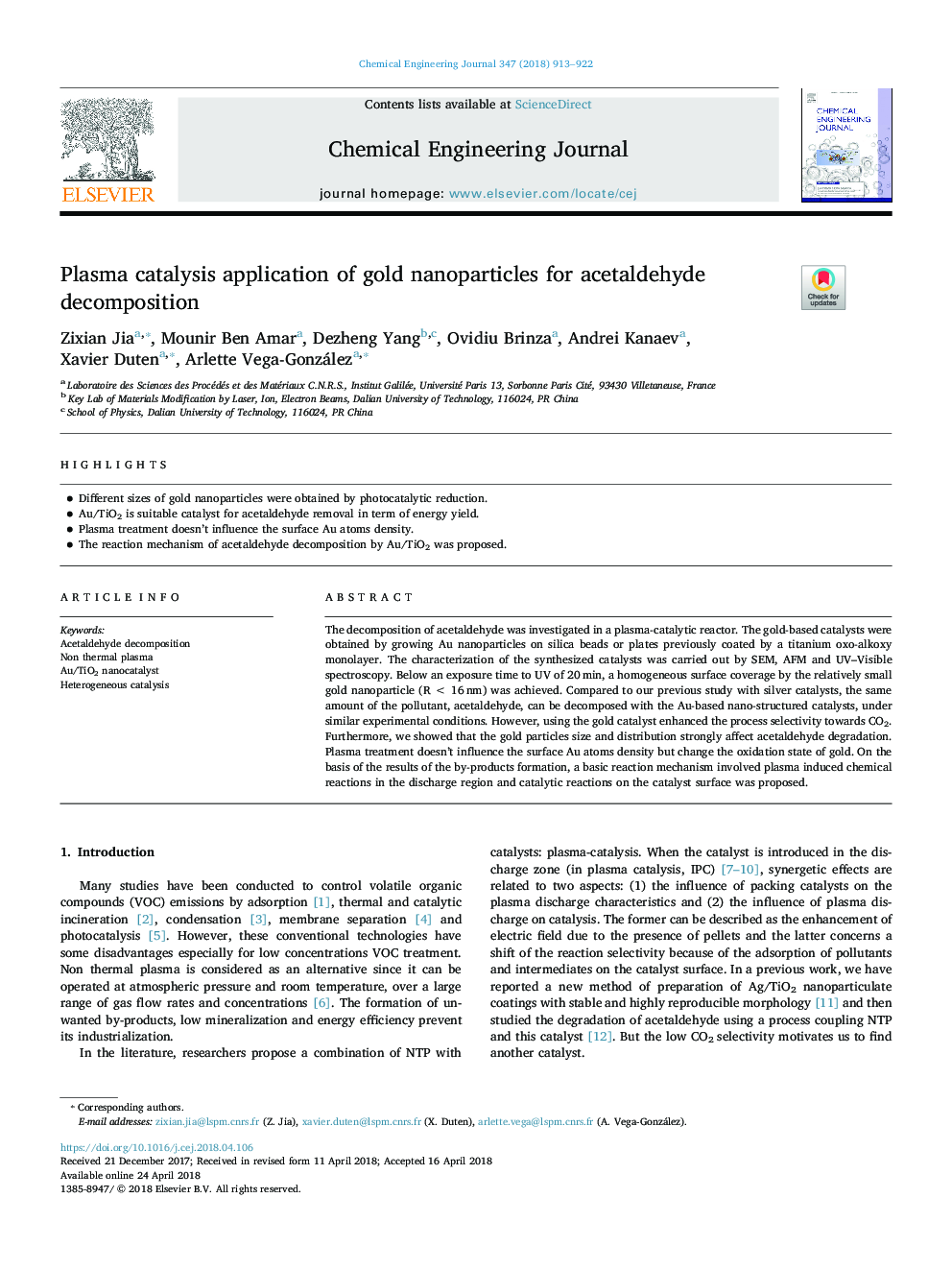| Article ID | Journal | Published Year | Pages | File Type |
|---|---|---|---|---|
| 6579185 | Chemical Engineering Journal | 2018 | 10 Pages |
Abstract
The decomposition of acetaldehyde was investigated in a plasma-catalytic reactor. The gold-based catalysts were obtained by growing Au nanoparticles on silica beads or plates previously coated by a titanium oxo-alkoxy monolayer. The characterization of the synthesized catalysts was carried out by SEM, AFM and UV-Visible spectroscopy. Below an exposure time to UV of 20â¯min, a homogeneous surface coverage by the relatively small gold nanoparticle (Râ¯<â¯16â¯nm) was achieved. Compared to our previous study with silver catalysts, the same amount of the pollutant, acetaldehyde, can be decomposed with the Au-based nano-structured catalysts, under similar experimental conditions. However, using the gold catalyst enhanced the process selectivity towards CO2. Furthermore, we showed that the gold particles size and distribution strongly affect acetaldehyde degradation. Plasma treatment doesn't influence the surface Au atoms density but change the oxidation state of gold. On the basis of the results of the by-products formation, a basic reaction mechanism involved plasma induced chemical reactions in the discharge region and catalytic reactions on the catalyst surface was proposed.
Related Topics
Physical Sciences and Engineering
Chemical Engineering
Chemical Engineering (General)
Authors
Zixian Jia, Mounir Ben Amar, Dezheng Yang, Ovidiu Brinza, Andrei Kanaev, Xavier Duten, Arlette Vega-González,
